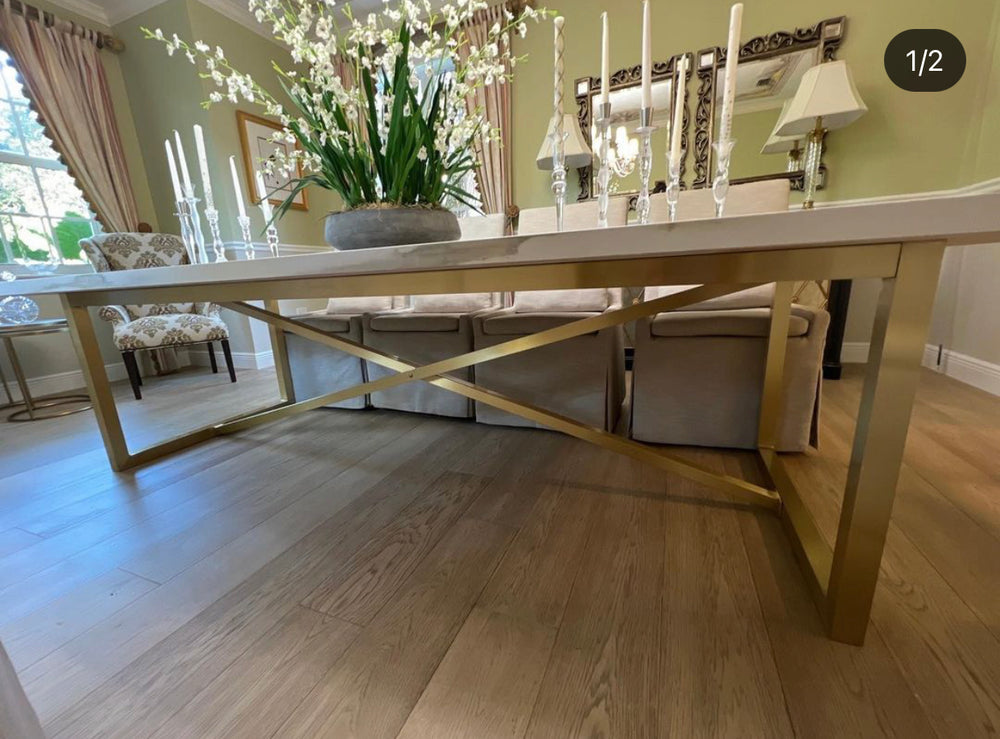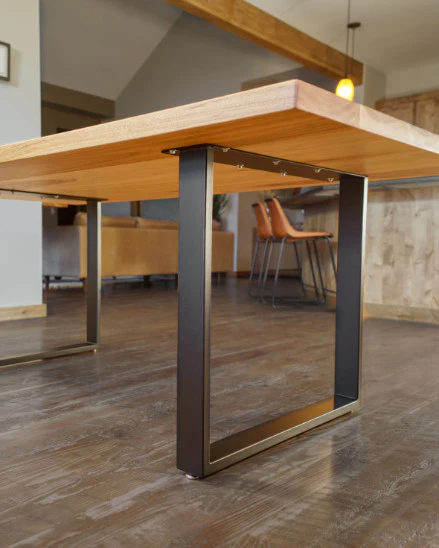Checking Out Various Styles for Dining Room Table Legs to Suit Your Visual
Checking Out Various Styles for Dining Room Table Legs to Suit Your Visual
Blog Article
A Comprehensive Check Out Dining Table Leg Styles: Finding the Perfect Match
Selecting the appropriate dining table leg style is critical for both aesthetic appeal and useful performance. For those with bigger tables, trestle legs make certain durable assistance, whereas barrette legs present a mid-century modern-day vibe with their minimalist style. The x-shaped legs mix contemporary design with enhanced stability.
Traditional 4 Legs
Among the various kinds of dining table leg styles, the standard four-leg layout continues to be a timeless choice for lots of households. This timeless setup supplies a harmonious mix of performance and aesthetic appeals, making it a perennial favorite. Four legs give balanced assistance, making sure the table remains secure and efficient in bearing significant weight. This is particularly advantageous for families that often organize huge events or use their table for several objectives, such as work or crafting.
From an aesthetic point of view, the conventional four-leg style can be quickly adjusted to different indoor styles. Whether crafted from timber, metal, or a mix of materials, these legs can be elaborately carved, streamlined and minimalistic, or anything in between. Their versatility permits them to enhance both rustic and contemporary settings perfectly.
In addition, the uncomplicated framework of the four-leg layout facilitates ease of activity and placement within a space. Unlike more facility bases, this design lessens blockages, giving enough legroom for diners. In summary, the conventional four-leg table leg design weds withstanding elegance with practical performance, making it a sharp selection for those seeking both type and feature in their eating furniture.
Stand Base
Typically celebrated for its sophisticated and space-efficient style, the stand base is a notable alternative to the conventional four-leg setup in table leg designs. This unique base commonly features a solitary main column supporting the tabletop, which can differ in form, from ornately sculpted wood to smooth, modern-day steel. Among the main advantages of the pedestal base is its capacity to make the most of legroom and seating flexibility. Without edge legs, restaurants are afforded greater liberty of motion, making it an excellent choice for round and oblong tables that advertise even more intimate and inclusive celebrations.
The main column itself uses a canvas for elaborate designs and imaginative expressions, adding an element of aesthetic rate of interest beneath the table. In recap, the pedestal base incorporates performance with style, making it a refined and practical choice for diverse eating environments.
Trestle Legs
Trestle legs give a durable and timeless structure for eating tables, identified by their straight cross-bracing and sturdy assistance beams. Originating from middle ages times, this style has progressed yet kept its essential framework, making it a perennial fave visit the website in both blog conventional and modern settings. The main trestle beam, commonly supported by two or even more vertical articles, offers phenomenal stability, enabling bigger table lengths without the requirement for additional legs.
A considerable benefit of trestle leg tables is the sufficient legroom they use. Unlike tables with four corner legs, the lack of blockages at the table's edges offers unblocked room for chairs and diners, improving convenience and accessibility. This makes trestle tables optimal for suiting larger events, whether in an eating area or a reception hall.
The aesthetic adaptability of trestle legs is significant. Readily available in a variety of materials such as wood, steel, and composite, they can be ended up to enhance a wide variety of interior designs. From rustic farmhouse to smooth modern-day layouts, trestle legs can be customized to suit individual tastes. Their enduring charm and practical advantages make trestle legs an engaging option for those looking for both design and usefulness in their table.
Hairpin Legs

The allure of hairpin legs depends on their simplicity and adaptability - dining room table legs. Available in a series of products, consisting of steel and brass, they can be finished in many shades to complement different interior designs. Whether coupled with a rustic wooden tabletop or a contemporary glass surface area, barrette legs easily blend functionality with a touch of vintage appeal
Durability is one more significant attribute of barrette legs. Regardless of their delicate appearance, these legs are engineered to bear considerable weight, ensuring the table stays steady and safe. In addition, they are reasonably easy to install, making them a popular choice for DIY enthusiasts and professional furniture makers alike.
X-Shaped Legs

Created from materials such as steel, wood, or a mix of both, X-shaped legs can be tailored to match different layout preferences. Steel legs typically offer a smooth and commercial feeling, ideal for loft-style apartment or condos and modern-day dining areas. On the various other hand, wood X-shaped legs provide a warmer, a lot more rustic appeal, suitable for farmhouse or eclectic interiors. The convenience in materials allows house owners to tailor their table to better fit their general layout plan.
Furthermore, the design behind X-shaped legs click this makes sure also weight circulation, minimizing the risk of wobbling and enhancing sturdiness. This makes them especially appropriate for bigger eating tables that call for added assistance. Essentially, X-shaped legs mix functional design with contemporary appearances, making them a classic selection for varied eating atmospheres.
Final Thought
A detailed understanding of table leg styles exposes the distinct characteristics and benefits of each layout. Typical 4 legs use stability and timeless appeal, while stand bases give legroom and a structured appearance. Trestle legs guarantee robust assistance for bigger tables, and hairpin legs introduce a mid-century modern-day visual. X-shaped legs integrate contemporary layout with improved stability. Selecting the ideal leg design guarantees both functional and visual contentment in any type of dining room.
Report this page